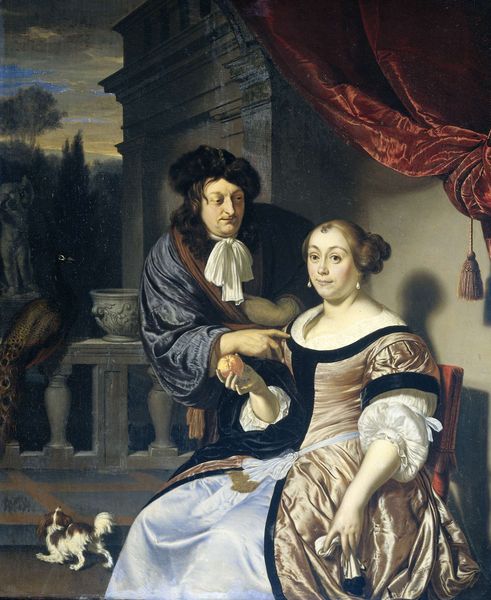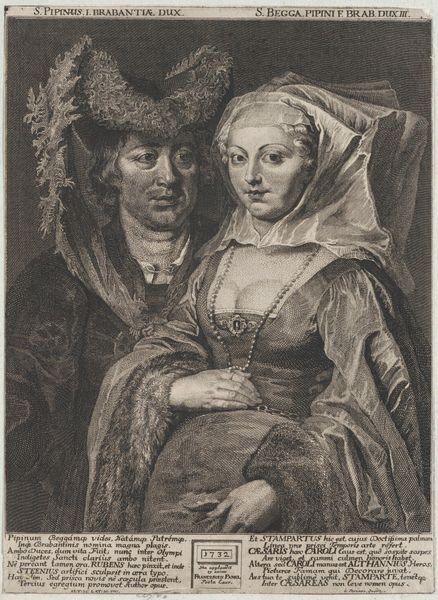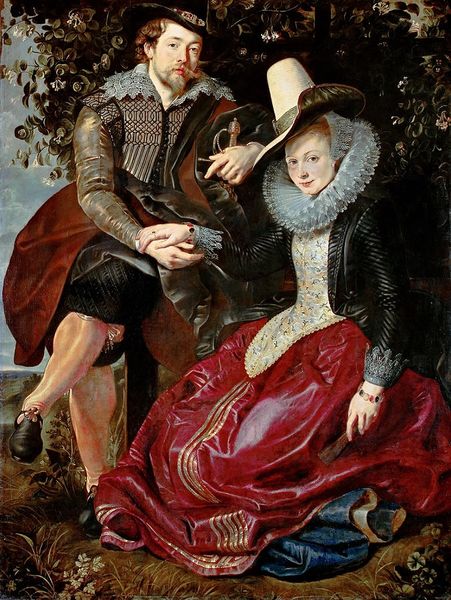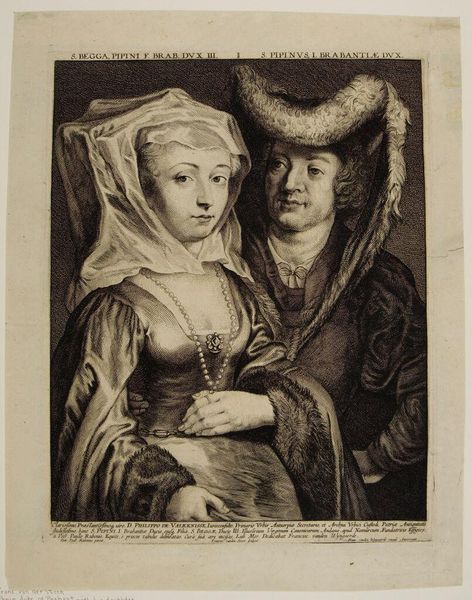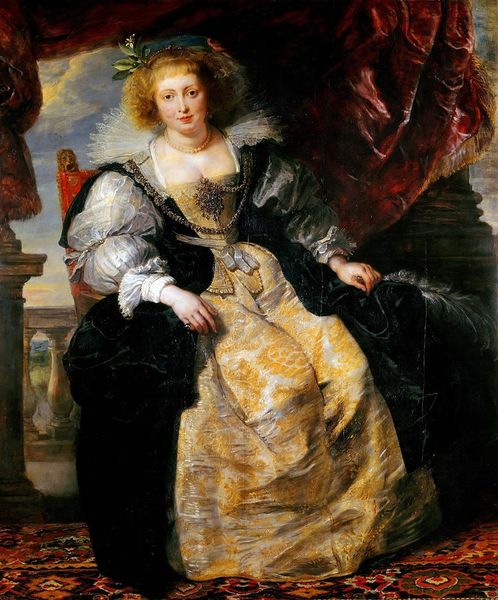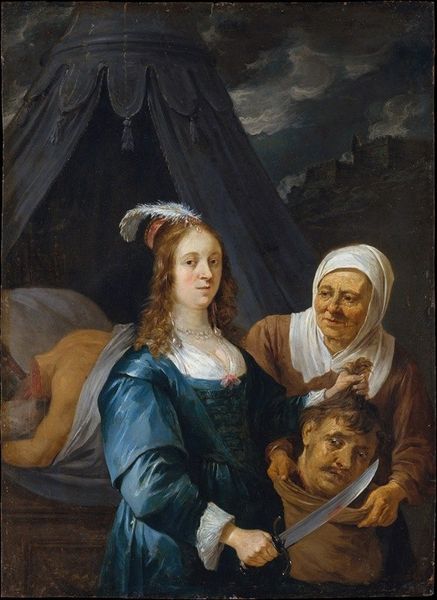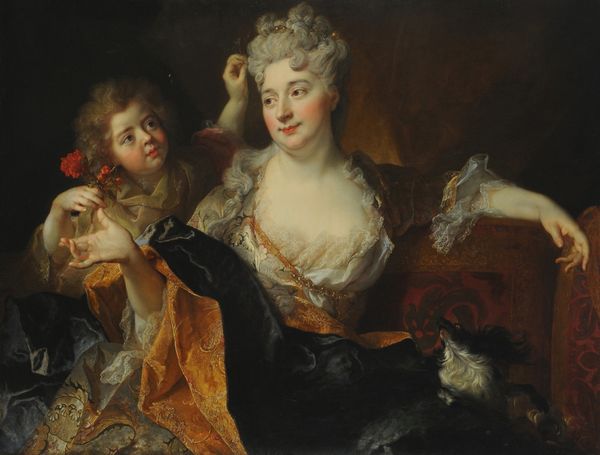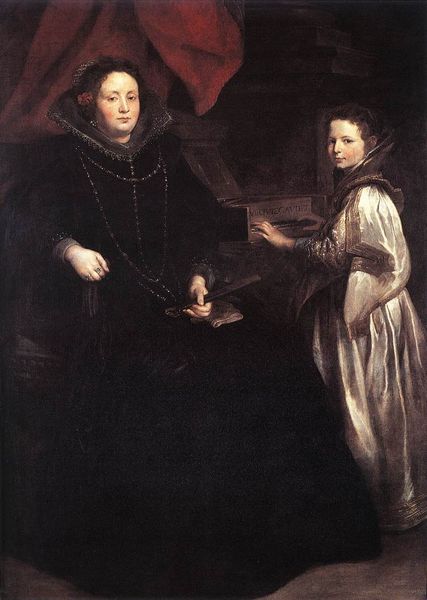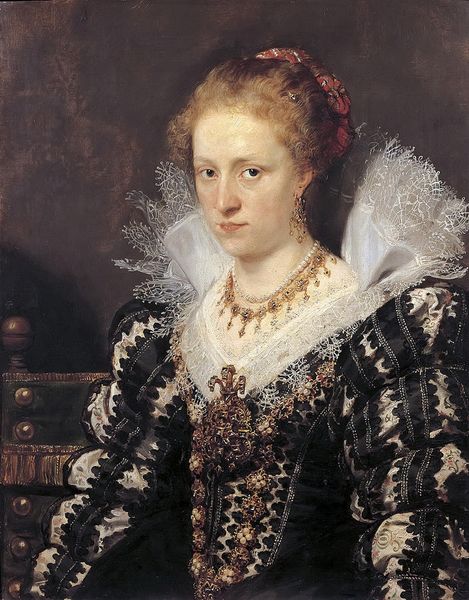
painting, oil-paint
#
portrait
#
baroque
#
painting
#
oil-paint
#
oil painting
#
history-painting
Copyright: Public domain
Editor: This painting, titled *Saint Bega and Her Husband Ansegius*, by Peter Paul Rubens, seems to be done in oil paint and looks to me like a portrait of a very wealthy couple. What's interesting is how detached they appear. What do you see in this piece? Curator: I see a powerful articulation of the Baroque era’s engagement with identity and status. Notice how Rubens deploys color and texture to convey wealth, particularly in the rendering of the fabrics and jewelry. This isn't simply about representation; it’s about constructing a very specific narrative of power. Editor: I can see the wealth, sure. The fabrics really stand out. Curator: Right, but think about the implications. Who are these people? What systems afforded them this position? Consider the male figure, he wears a rather... unique hat, suggesting an assertion of authority rooted in tradition. Now think about the female figure - Bega. Does her attire enforce gender roles that would constrain her potential outside of being Ansegius' wife? Editor: So, you're suggesting it is more than just a painting, that it reflects social structure? Curator: Precisely! Rubens situates them within a socio-political framework where power and gender are performative constructs, emphasized through symbolic representation. It serves as a reflection, and perhaps a critique, of societal expectations. Editor: I never really looked at portraits like that before, so it's all in how these paintings interact with the time they are made. Thanks for opening my eyes to the history embedded in what seems to be just rich garments. Curator: The pleasure is mine. Every brushstroke has something to tell.
Comments
No comments
Be the first to comment and join the conversation on the ultimate creative platform.
